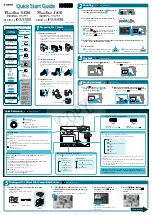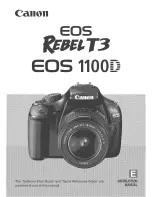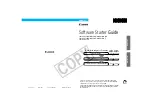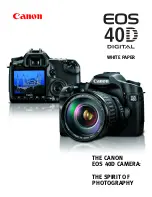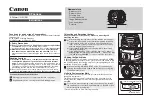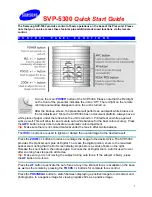
4
Phenomena Specific to
Image Sensors
Note
The following phenomena that may occur in images are
specific to image sensors. They do not indicate a
malfunction.
White flecks
Although the image sensors are produced with high-
precision technologies, fine white flecks may be
generated on the screen in rare cases, caused by cosmic
rays, etc.
This is related to the principle of image sensors and is
not a malfunction.
The white flecks especially tend to be seen in the
following cases:
• When operating at a high environmental temperature
• When you have raised the gain (sensitivity)
• When using the slow shutter
Aliasing
When fine patterns, stripes, or lines are shot, they may
appear jagged or flicker.
System Components
A system centered on the unit can comprise the
following components (available separately).
a
Video camera module (this unit)
This is a small-size, high-resolution, camera that uses a
CMOS image sensor with a global shutter function.
b
Camera cable
This is attached to the DC power input connector of the
unit and is used for the power supply and exchange of
trigger signals. For details about purchasing a cable,
consult a dealer.
c
C-mount lens
Use a suitable lens to fit the camera pixel count.
d
DC-700/700CE Camera Adaptor
This is connected to the unit to enable power supply
from an ordinary AC power source.
e
VCT-333I Tripod Adaptor
This attaches to the bottom of the unit to mount the unit
on a tripod.
f
USB 3.0 interface image input board
Install the board in the expansion slot of the host device
(computer or other device).
The camera can also be connected to a USB 3.0 port on
a computer, but the use of the input board is
recommended.
This document describes the case where the input board
is used.
g
USB 3.0 cable
Connect to the USB connector on the rear panel of the
unit to send image signals and to receive control signals.
Use a Standard USB A to USB Micro B, USB 3.0 cable
that is compatible with the USB3 Vision standard.
For details about purchasing a cable, consult a dealer.
a
b
c
d
e
f
g





















